Vivian Maier, the nanny photographer
In this article published in No. 195 of Descubrir el Arte we discover a photographer who became famous only after her death: this is Vivian Maier. To learn more, read this article that I translated for you! :) Here is the link to the original.
A taciturn and complicated nanny took tens of thousands of photographs of Chicago and New York between the 1950s and 1970s, but they fell into oblivion. A documentary, two books and the Internet now bring her to glory. In No. 195 of Descubrir el Arte, Francisco J.R. Chaparro introduces us to this artist, despite the fact that she became one only after her death.
The article poses, after telling the fascinating story of this nanny photographer, a series of rhetorical questions that open an interesting debate on the legitimacy of making public a work that its author kept to herself. How should we view the high quality, large museum prints made by an amateur photographer like Vivian Maier? Which photos would she select and which would she not? And again, would she be okay with her photos being exhibited to the public? Maier’s is not the only example Chaparro lays out regarding the problem of authorship and posthumous printing of negatives: in his article, he recalls the controversy that arose after the publication of Diane Arbus’s posthumous monograph or Garry Winogrand’s exhibition at the Metropolitan Museum, which featured some of the images that this North American photographer had not revealed.
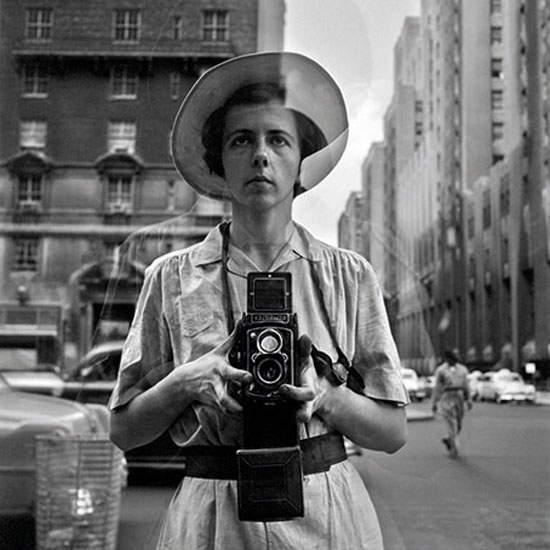 |
| Vivian Maier, Self-Portrait |
What is the Maier case like? Her photographic material, along with the rest of her tools, was gathered, at the time of her death in 2009, in a furniture warehouse in Chicago. As fate would have it, during an auction, an amateur historian, John Maloof, stumbled upon one of Maier’s boxes filled with rolls of film and, fascinated by what he found, decided to follow in her footsteps to make her photographic legacy known. This is where Vivian Maier’s public (and posthumous) life begins. She became an artist by following the 2.0 model, thanks to the Internet, when her photos gained virtual applause on photography forums; no thanks to institutions, which prefer in spite of the negatives the scarce, low-quality vintage prints in her case that appear in stores.
A documentary helped raise his profile, along with two monographic books (Self-Portraits and Street Photographer), recently published by Powerhouse Books; these managed to bring his work, at last, closer to critics. Thus, a Google search of his name in early 2015 already developed nearly two million results.
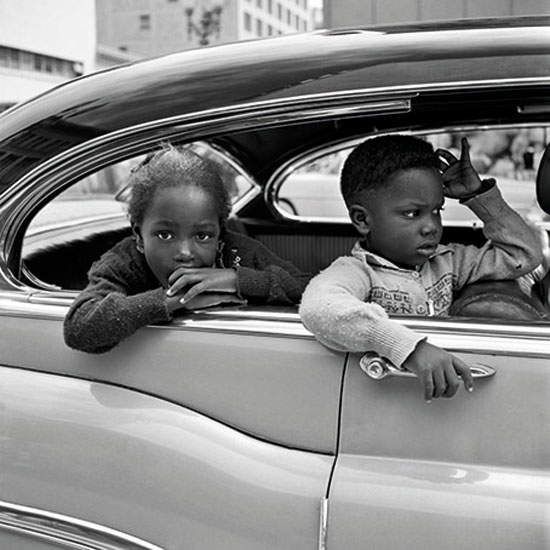 |
| San Francisco, California, Nov. 4, 1955 |
Maier, who used various names some of them fictitious worked as a nanny, was pathologically jealous of her intimacy and lived a melancholy and complicated existence that ended at the edge of destitution. One of her masks, the most persistent, was that of a photographer. Her Rolleiflex camera had enabled her to face reality without the need to delve into it, and without even having it in front of her, but from the distance of the camera’s viewfinder. Despite the impressive quality of her photos, it seems that Maier never had any pretensions to begin a career as a photographer, and few were those who had the opportunity to see her photographs during their author’s lifetime. Just as Chaparro reports, La Maier had accumulated tens of thousands of negatives from the mid-1950s to the 1970s, resulting from her photographic adventures on the streets of Chicago and New York. She had no artistic pretensions, but social sensibility. Maier moves socially between lines, without fixed attributes, outside the mold of both the classical family unit and the outsider, and her photography captures this mobility. A reflection in a shop window, two hands touching, a woman preparing to get into a luxurious car, the inside of a dustbin, a pile of stacked boxes, a dead horse on the sidewalk, a child’s smile, women waiting in line for the bus. This is Vivian Maier’s floating world, alien to all artistic pretensions, superimposed on her path.
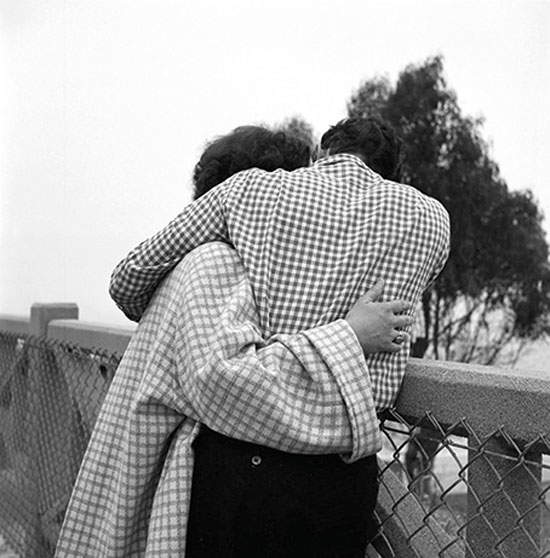 |
| Untitled, 1960 |
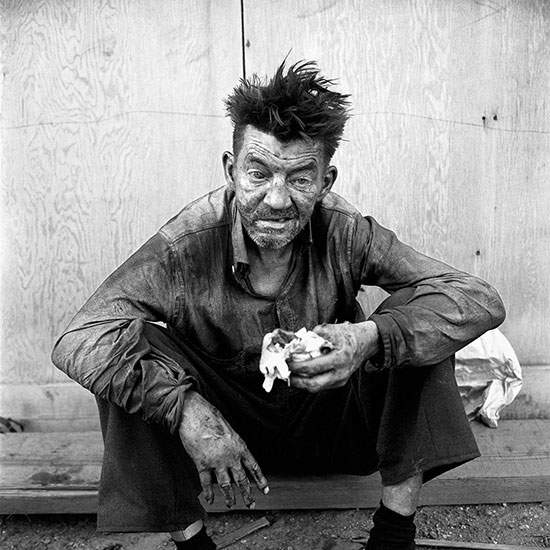 |
| September 24, 1959, New York |
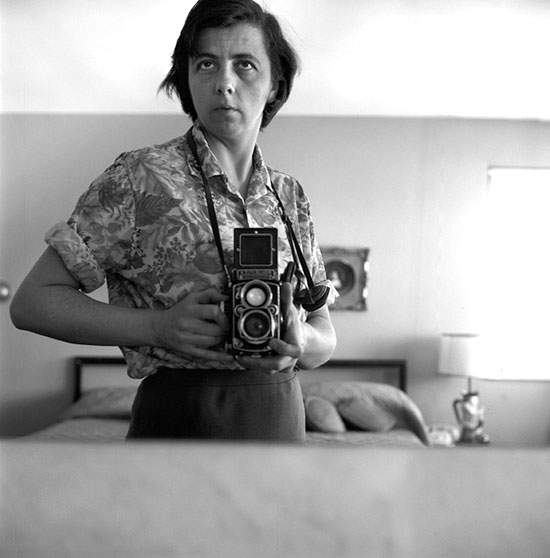 |
| Vivian Maier, Self-Portrait |
Warning: the translation into English of the original Italian article was created using automatic tools. We undertake to review all articles, but we do not guarantee the total absence of inaccuracies in the translation due to the program. You can find the original by clicking on the ITA button. If you find any mistake,please contact us.





























